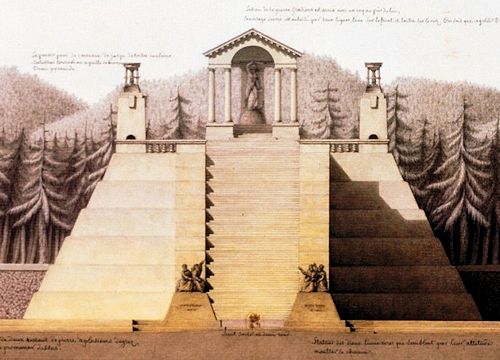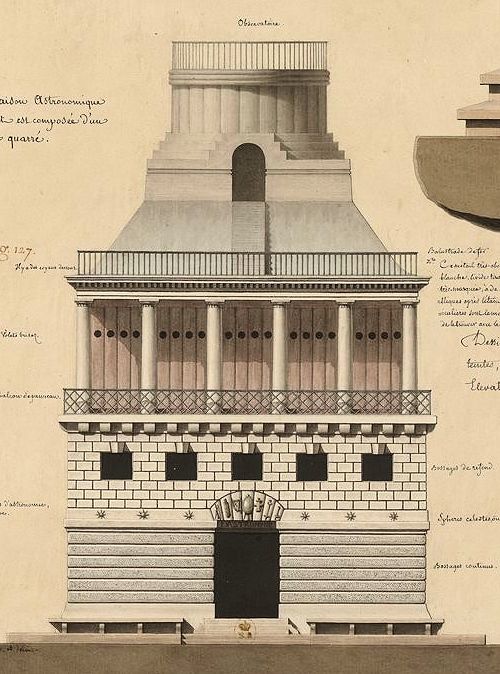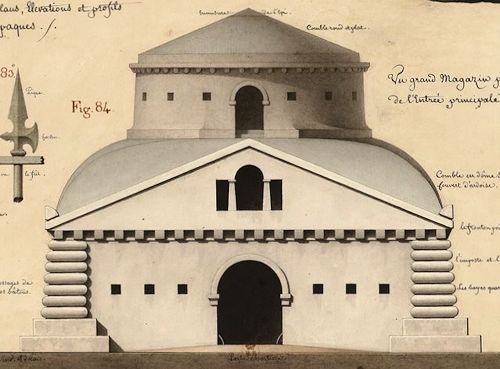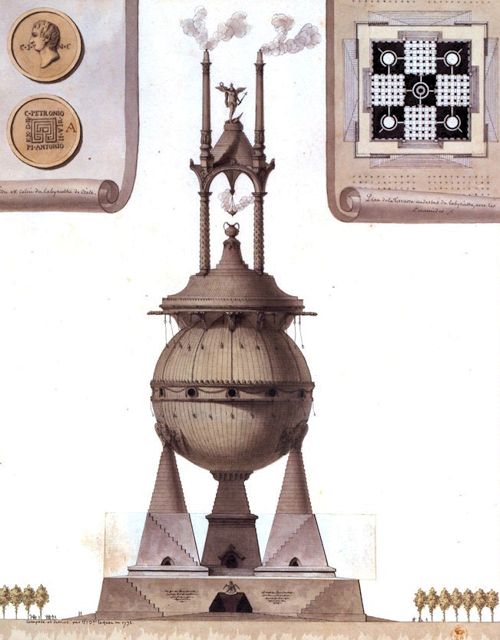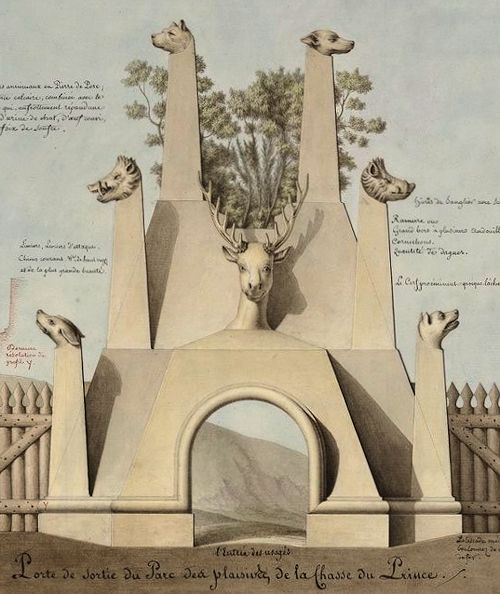LeDeuzzy, Q. |
I believe in multiple choice |
|
|
|
the Temple of the God of the Armies, | the House of the Astronomer, | the Public Warehouse, |
|
|
|
and the Tomb of Porsenna (1791) would have appeared "monstrosities" to Blondel. Most of these designs combine a classical background with unclassical composition. Lequeu took the general layout of Porsenna's Tomb from the description in Pliny's Natural History, which he quotes on the margin of his drawing. He was very free in the details. Instead of the five pyramids carrying the metal globe, he presents small cones on truncated pyramids; and instead of the pyramids on top of the globe he adds a canopy on slender columns. The main effect of Lequeu's Tomb is derived from the contrast of the giant globe to the other features. Lequeu may have known original Etruscan work. But if we compare his Tomb with bowls on high stands of the seventh and sixth centuries B.C., we notice significant differences. The Etruscan products show supple, almost organic shapes with lavish sculptural decoration in harmony with them. Lequeu, however, builds up his Tomb of rather geometric forms. Even if we were to find Etruscan objects more like his design than the ordinary bowls on high stands, we should not be satisfied that we had discovered his true model. We would still have to ask why the architect copied these particular objects and not the "organic" type. His aim now was to create an agglomerate of inorganic shapes rather than a compact plastic body such as his early Monument to Athena. The composition of the Tomb is typical of the new time, as is the fantastic element in it, although it differs widely from the usual Romantic productions. | A further very curious invention is the Entrance to the Deer Forest, decorated with plastic heads of a stag, boars, and hounds. Again early Etruscan objects appear to have been Lequeu's inspiration. In this extravagant composition he is a classicist turning to a primitive stage of ancient art. "Narrative" architecture is carried far in the Cowshed in the form of a cow with a jug on her head and in that antler-shaped gate. | The new compositional principle of independence of the elements appears in the imposing Castle on the Sea. This consists of a low cylindrical substructure, a tall cylindrical house, and a polygonal superstructure forming the base of a square spire. It is a "castellated" building free of pettiness. Here we face Romanticism in austere grandeur. This work of architecture is the perfect counterpart of the restless waves. |
www.quondam.com/90/9002i.htm | Quondam © 2020.01.04 |
